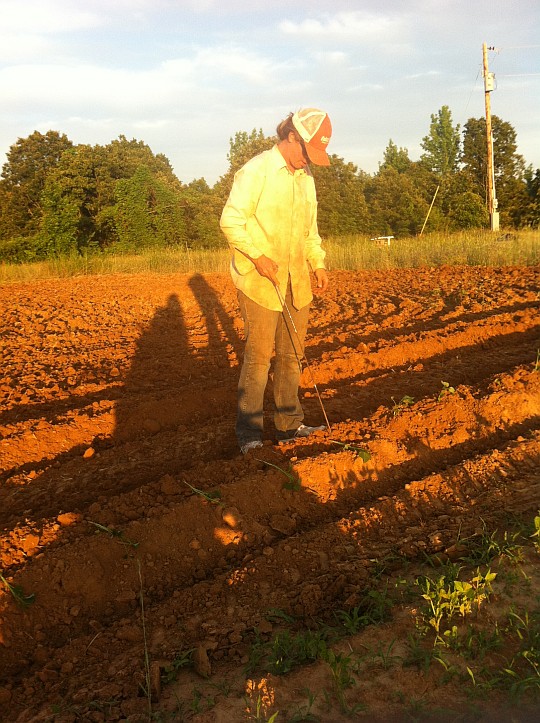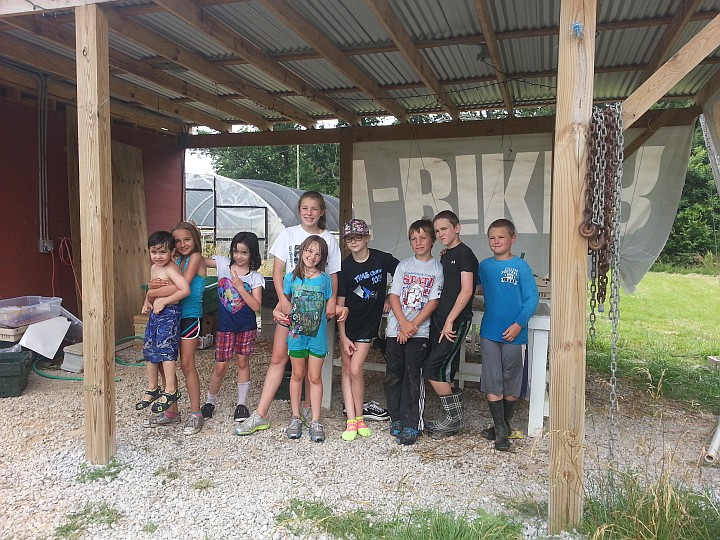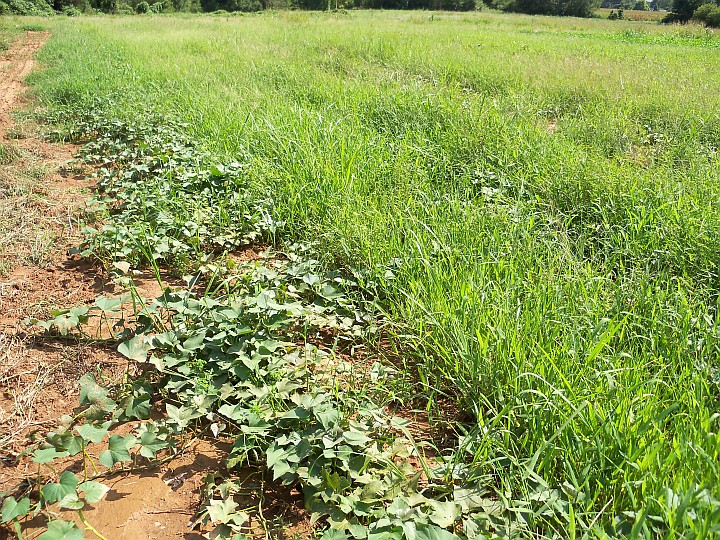This week the sweet potatoes went in and the Irish potatoes came out! Calling them Irish is a bit misleading. Like all of our squash and beans, potatoes come from the Americas. Specifically, potatoes come from the Andes where they were domesticated between 7,000 and 10,000 years ago in modern day Peru where 3,800 or so varieties are grown today. The first potato did not arrive in Ireland until 1589. So, thanks to 14 wonderful helpers on Sunday, we dug another 250 pounds of Andean potatoes. A special thanks to Chris and Claire for doing the lion’s share of heavy lifting. If you are curious to know how commercial potato farmers get their crop out of the ground, check out this video: http://www.youtube.com/watch?v=B3kATkCQ9kI
 Saturday through Monday of last week we planted sweet potatoes – which are in fact cousins of the morning glory and are completely unrelated to Andean potatoes, which are closely related to tomatoes, peppers and eggplant. Like Andean potatoes, however, sweet potatoes are grown vegetatively, which means by cloning. Every potato plant is a genetic clone of the parent. While cloning animals is a feat of modern technology, cloning plants is old hat. Sweet potato slips are cuttings of sweet potato vines grown from last year’s tubers.
Saturday through Monday of last week we planted sweet potatoes – which are in fact cousins of the morning glory and are completely unrelated to Andean potatoes, which are closely related to tomatoes, peppers and eggplant. Like Andean potatoes, however, sweet potatoes are grown vegetatively, which means by cloning. Every potato plant is a genetic clone of the parent. While cloning animals is a feat of modern technology, cloning plants is old hat. Sweet potato slips are cuttings of sweet potato vines grown from last year’s tubers.
I picked up 1000 slips from Jamie Williamson on Saturday who advised me to get out into the field and get them in the ground because rain was coming the next day. We dutifully headed out to Planting sweet potatoes at duskdisk the field, make beds, and tuck the slips into the ground with my new, high tech sweet potato planter – a metal rod with a notch cut out of the end. We got about 200 slips in that evening before we ran out of daylight. At 5am Sunday morning we were back out in the field planting, but the rain kept driving us out. I finally got done slogging around a muddy field Monday morning – all our slips are in and they are looking good.
In other news, we have diagnosed our persistent brassica problem: BLACK ROT! The cabbage, broccoli, kohlrabi, kale and turnips were all effected this spring…which is why you have been getting so much more chard than kale! Of the few cabbages left behind by the rabbits, we were only about to harvest about half of them, the rest fell to black rot. Black rot is a bacterial infection that comes in on seeds and is spread by touch. It cannot be cured, only prevented. When we start planting our fall brassicas in July we will sterilized our seed trays, scrap all untested seeds, and hope for the best!
Potato Dig Party

